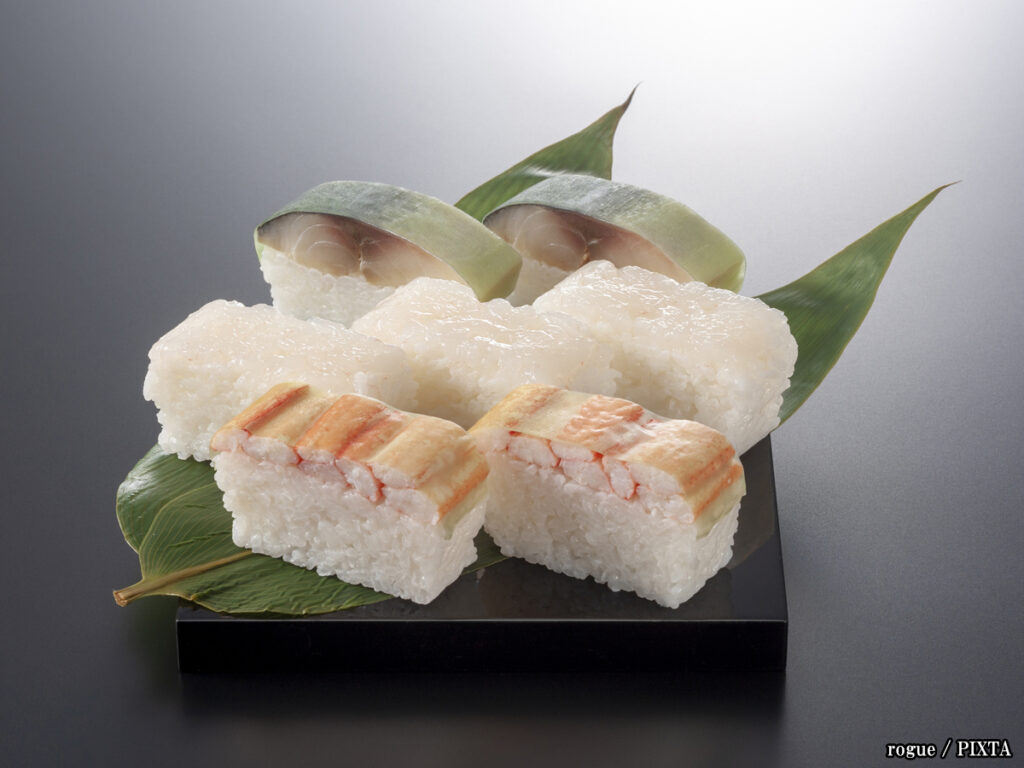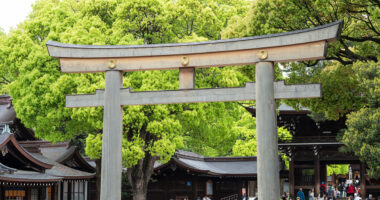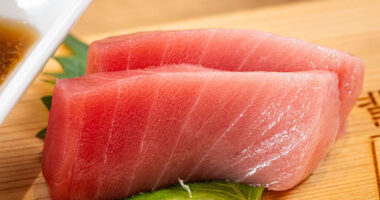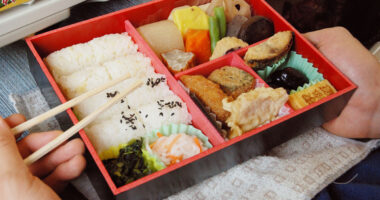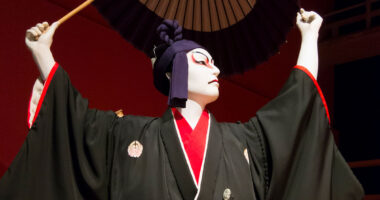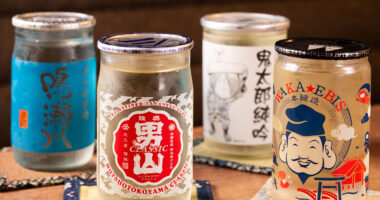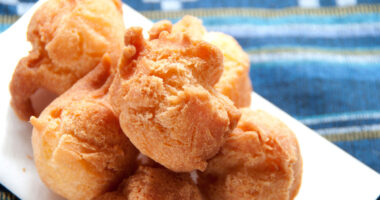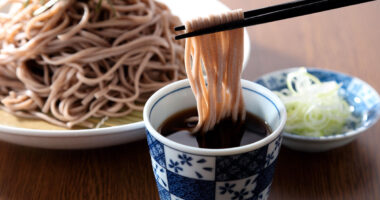- What is sushi
- How is oshizushi different from nigiri and maki rolls
- Different types of sushi
- Chirashi sushi
- Temaki sushi
- Inari sushi
- History of oshizushi
- What makes oshizushi unique
- Popular types of oshizushi
- How oshizushi is made
- How to enjoy oshizushi at home
- Pairing oshizushi with drinks
- Final thoughts
If you’re visiting Japan or planning a trip soon, trying different types of sushi is probably on your list. While most people are familiar with nigiri or maki (sushi rolls), there’s another traditional style worth discovering—oshizushi. This pressed sushi has been around for centuries and is often made using a rectangular mold, traditionally made of wood, which shapes layers of sushi rice and toppings into a neat, compact rectangle. It’s a unique way to experience Japan’s culinary heritage, and you’ll find it in select sushi shops, especially in regions where this method has deep roots.
Originating from the Kansai region, particularly Osaka and the ancient capital of Nara, oshizushi is one of Japan’s oldest sushi styles. It was developed as a way to preserve fish before refrigeration, using pressure to enhance flavors and extend shelf life. Modern sushi is often served fresh, but this traditional technique makes it possible to enjoy sushi for longer periods.
This guide explores everything you need to know about oshizushi, from its rich history and unique preparation methods to its regional variations and where you can try it today.
What is sushi
Sushi is one of Japan’s most iconic and beloved dishes, known for its delicate balance of flavors, textures, and presentation. At its core, sushi consists of vinegared rice combined with various ingredients, such as raw or cooked seafood, vegetables, and seaweed.
While many people associate sushi with raw fish, the term “sushi” actually refers to the seasoned rice rather than the toppings. Over centuries, different styles of sushi have emerged, each offering a unique taste and dining experience.
How is oshizushi different from nigiri and maki rolls
Nigiri and maki rolls are the most well-known types of sushi, but oshizushi offers a completely different experience. Nigiri consists of hand-pressed sushi rice topped with a slice of fish, while maki rolls feature rice and fillings usually wrapped in seaweed and sliced into bite-sized pieces.
Oshizushi, on the other hand, is carefully layered and usually pressed into a rectangular mold, giving it a firm, uniform shape. This technique enhances the flavors by evenly distributing the toppings and seasonings, creating a distinct texture and taste compared to the more common sushi styles.
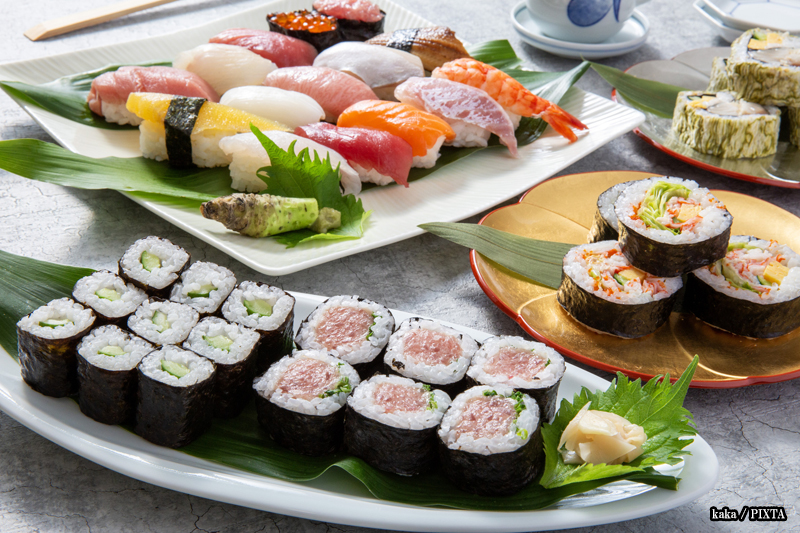
Photo for illustrative purposes
Different types of sushi
Here are some other popular types of sushi enjoyed in Japan:
Chirashi sushi
Chirashi sushi (pronounced “chirashizushi” in Japanese) is a vibrant and casual sushi dish where vinegared rice is served in a bowl and topped with an assortment of fresh fish, vegetables, and garnishes. It offers a colorful and diverse presentation with a mix of flavors in every bite.
Temaki sushi
Temaki sushi (pronounced “temakizushi” in Japanese) is a cone-shaped hand roll made by wrapping sushi rice and fillings in a sheet of nori. It is designed to be eaten with the hands, making it a fun and interactive sushi option.
Inari sushi
Inari sushi (pronounced “inarizushi” in Japanese) consists of vinegared rice stuffed inside a pocket of sweet, marinated tofu skin. It has a slightly sweet taste and a soft, juicy texture, making it a unique sushi variety.
Each type of sushi reflects Japan’s rich culinary traditions, and trying different varieties offers a deeper appreciation for its artistry and flavors.
History of oshizushi
The roots of oshizushi date back to Japan’s Edo period (1603–1868), but its origins stretch even further to the Muromachi period (1336–1573).
Oshizushi evolved from narezushi, Japan’s earliest sushi form, where fish was fermented with rice for several months to preserve it. This process resulted in a strong, pungent flavor that not everyone found appealing. As preservation techniques improved, people sought faster and more palatable alternatives. Instead of long fermentation, they began lightly pressing cured fish onto vinegared rice, significantly reducing preparation time while maintaining rich umami flavors. This transition led to the development of oshizushi, a technique that struck a balance between tradition and taste.
Oshizushi is still a cherished specialty in the Kansai region, especially in Osaka and Shiga Prefecture. Unique variations like battera, made with mackerel, and funazushi, a rare fermented sushi using freshwater fish, keep this tradition alive. Even as sushi continues to evolve, the art of pressed sushi remains a testament to Japan’s rich culinary heritage, blending history with modern tastes.
What makes oshizushi unique
Oshizushi isn’t just about fresh fish—it’s about precision, texture, and balance. Here’s what makes this centuries-old sushi style so special:
Perfectly pressed shape
Oshizushi’s compact shape blends the layers of rice and fish, creating a firmer texture and a richer, more harmonized flavor than hand-formed sushi.
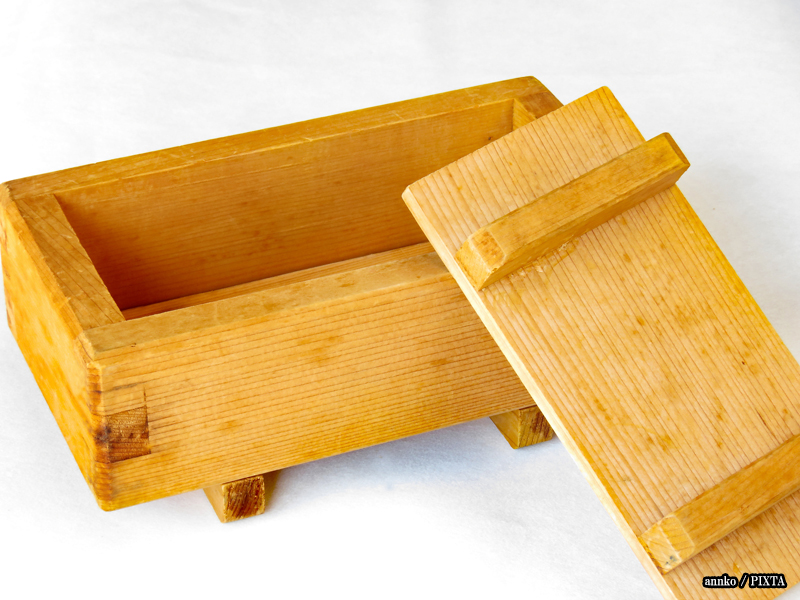
Photo for illustrative purposes
Marinated, not raw
Instead of fresh raw fish, oshizushi typically uses cured or marinated seafood like mackerel, eel, shrimp, or salmon. This not only enhances the flavor but also extends its shelf life.
Layered flavors
The pressing technique helps the vinegared rice and fish blend together, creating a rich, well-balanced taste in every bite.
If you want to explore a different side of Japan’s sushi culture, oshizushi is a must-try. Its unique preparation method offers a distinct texture and flavor that sets it apart from traditional sushi styles.
Popular types of oshizushi
Oshizushi comes in various regional styles, each offering a unique take on this traditional pressed sushi. Whether you prefer mild, tangy, bold flavors or aged richness, there’s a type for every palate. Here are some of the most well-known variations:
Battera (Osaka-style mackerel sushi)

Photo for illustrative purposes
A signature dish from Osaka, battera features vinegar-marinated mackerel fillets pressed over sushi rice, often topped with a delicate layer of kombu kelp. The kelp adds depth to the flavor, making this a favorite among sushi lovers who enjoy a balance of acidity and umami.
Funazushi (Shiga-style fermented sushi)
Funazushi is a unique type of sushi that undergoes a months-long fermentation process often using funa (crucian carp) from Lake Biwa. This aging technique gives it a strong, pungent flavor reminiscent of blue cheese, making it a rare delicacy that pairs well with sake.
Masuzushi (Toyama-style trout sushi)
A specialty of Toyama Prefecture, masuzushi consists of lightly cured masu (trout) pressed over vinegared rice and wrapped in fragrant bamboo leaves. Often sold as an ekiben (train station bento), this sushi is a popular souvenir for travelers.
Saba oshizushi (Kyoto-style mackerel sushi)
A classic Kyoto favorite, saba (mackerel) oshizushi showcases pickled mackerel layered over sushi rice, sometimes wrapped in bamboo leaves for an extra touch of aroma. The curing process enhances the fish’s umami, creating a well-rounded taste.
Unagi oshizushi (freshwater eel sushi)
For those who enjoy rich, smoky flavors, unagi (freshwater eel) oshizushi is a must-try. This version features tender grilled freshwater eel brushed with a sweet soy-based glaze, then pressed into sushi rice for a melt-in-your-mouth experience.
How oshizushi is made

Photo for illustrative purposes
The process of making oshizushi requires precision, patience, and the right balance of ingredients. Each step plays a crucial role in achieving the signature compact shape and layered flavors that define this traditional sushi style. Here’s a closer look at how it’s prepared:
Step 1: Prepare the sushi rice
Sushi rice, or shari, is the foundation of Oshizushi. Start by cooking high-quality Japanese short-grain rice, which has the perfect level of stickiness. Once cooked, it is seasoned with a mixture of rice vinegar, sugar, and salt, creating the signature tangy flavor. Allow the rice to cool slightly—if it’s too hot, it won’t hold its shape properly when pressed.
Step 2: Select the toppings
Oshizushi sets itself apart from other sushi styles by traditionally featuring cured or marinated toppings instead of raw fish. Popular choices include:
- Saba – lightly cured in vinegar to enhance its umami flavor.
- Sake (salmon) – sometimes marinated or smoked for extra depth.
- Unagi or anago (saltwater eel) – grilled and coated with a sweet soy-based sauce.
- Ebi (shrimp) – often blanched and butterflied for a smooth texture.
- Masu – a favorite in regional variations like Toyama’s masuzushi.
In some variations, thin slices of kombu are placed on top to enhance the umami taste and preserve moisture.
What is kombu?
Kombu is an edible seaweed commonly used in Japanese cuisine. It is rich in natural umami flavor and is often added to dishes for depth and complexity.
Step 3: Assemble the sushi in a mold
The oshizushi mold is what gives the most common type of oshizushi its distinctive shape. To assemble the sushi:
- Line the mold:
Some chefs use bamboo leaves or plastic wrap to prevent sticking. - Layer the ingredients:
The fish or toppings are placed at the bottom of the mold first. - Add sushi rice:
A layer of seasoned rice is carefully spread over the fish. - Press firmly:
Using the mold’s lid, pressure is applied to compact the layers together. This pressing process enhances the flavors by melding the fish and rice.
Step 4: Cut and serve
Once pressed, the sushi block is removed from the mold and cut into uniform rectangular pieces. A sharp knife, often dipped in water, is used to ensure clean cuts without sticking to the rice. Oshizushi is then beautifully arranged and served, sometimes garnished with shiso leaves, pickled ginger, or a light brush of soy sauce.
This careful preparation method not only preserves the fish but also creates a dense, flavorful bite that distinguishes oshizushi from other sushi types.
How to enjoy oshizushi at home
You don’t need to be in Japan to experience the unique flavors of Oshizushi. With an mold, you can easily recreate this pressed sushi at home. These molds are available online, and once you have one, the process is quite simple!
If Japanese fish isn’t available, you can substitute it with locally sourced fish, or even shrimp, and if fresh fish isn’t available, you can substitute it with smoked salmon or lightly pickled mackerel. For a vegetarian twist, try layers of avocado, pickled vegetables, or tofu for a fresh and colorful variation.
Pairing oshizushi with drinks
The right drink can elevate your oshizushi experience. Here are some great pairing options:
- Green tea:
A cup of sencha (a common Japanese green tea with a refreshing, grassy taste) or genmaicha (a blend of green tea and roasted brown rice with a mild, nutty taste) provides a clean, slightly grassy flavor that balances the richness of the sushi. - Sake:
A dry sake (known as nihonshu if you’re in Japan) enhances the umami of marinated fish, bringing out its depth of flavor. - Light Japanese beers:
Crisp and refreshing Japanese beers help cleanse the palate between bites, keeping each piece as enjoyable as the first.
Final thoughts
Experiencing oshizushi in Japan isn’t just about tasting a dish—it’s about appreciating a centuries-old culinary tradition that embodies precision and artistry. Whether you’re planning your trip or already exploring Japan, seeking out this pressed sushi offers a deeper connection to the country’s food heritage.
As you visit sushi restaurants, remember that respect for the craft and culture is key. Take a moment to observe local dining etiquette, savor each bite, and appreciate the skill behind every carefully pressed piece. Oshizushi isn’t just food—it’s a reflection of Japan’s dedication to balance and refinement.
